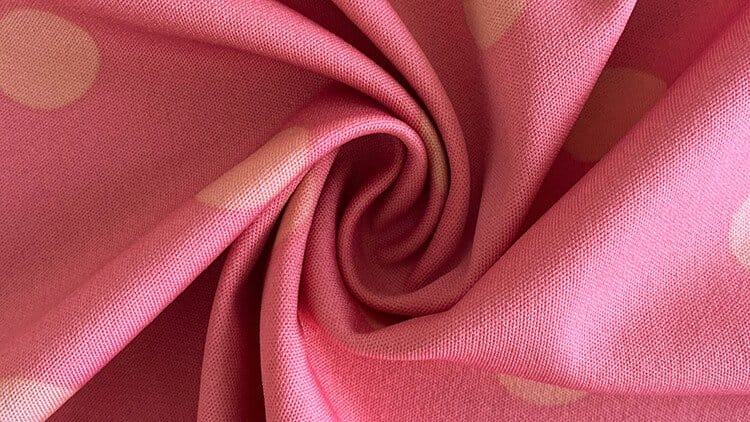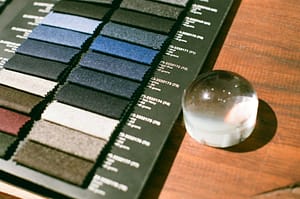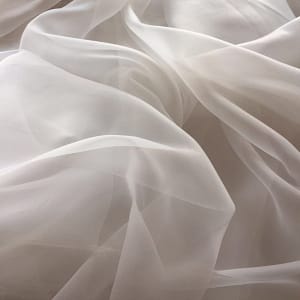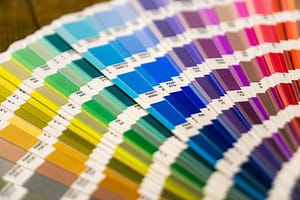Origins of Spandex Fabrics
Spandex, a synthetic fabric renowned for its stretch, was invented in the 1950s as a response to the growing demand for more flexible, durable textiles. Initially developed as an alternative to rubber in elastic clothing, spandex quickly gained popularity in fashion and sports. With innovations over the decades, it has evolved from niche applications to a global presence in garments that prioritize comfort and adaptability. Today, spandex stands as a milestone in textile history, offering unmatched elasticity and resilience.
What is Spandex?
Spandex, also known as elastane or by the trade name Lycra, is a synthetic fiber composed primarily of polyurethane. Invented in the 1950s, spandex stands out among textiles for its unparalleled elasticity, able to stretch up to five times its original length and return to its natural shape. This unique stretchability is a result of its flexible, synthetic polymer base, making it vastly more resilient than natural fibers like cotton or wool.
Characterized by its smooth, lightweight texture, spandex is often blended with other fibers to enhance the comfort, durability, and flexibility of various garments. As a fiber that excels in both comfort and performance, spandex has transformed industries from fashion to sportswear, finding its place in products like athletic leggings, swimwear, hosiery, and even medical compression garments. Its ability to conform snugly to the body’s shape while allowing freedom of movement has cemented spandex as a core component in modern textile manufacturing, enabling the creation of garments that support, contour, and adapt to active lifestyles.
Properties of Spandex Fabrics
Spandex fabrics is prized for its unique combination of flexibility and resilience, making it an essential component in many modern textiles. Key properties include:
- Elasticity and Stretch: Spandex can stretch up to five times its original length, providing unparalleled flexibility and comfort.
- Lightweight and Durable: Despite its strength, spandex is lightweight, allowing garments to feel almost weightless while still being durable.
- Moisture and Oil Resistance: It resists sweat, oils, and body lotions, making it ideal for activewear and everyday clothing.
- Shape Retention: Spandex returns to its original form after stretching, helping clothes maintain their fit over time.
These properties make spandex indispensable in creating garments that need both durability and comfort.
Type of Spandex Fabric
Spandex fabrics come in a few main categories, each tailored to meet the specific requirements of various applications. Here are the primary types:

Pure Spandex: Comprised of 100% spandex fibers, this type is known for its exceptional stretch and recovery capabilities. Pure spandex is commonly used in specialized applications such as compression garments, performance wear, and therapeutic apparel where maximum elasticity and support are essential.

Spandex Blends: To enhance comfort, breathability, or durability, spandex is often blended with other fibers like cotton, polyester, or nylon. These blends balance the elasticity of spandex with the softness or strength of other fibers, making them ideal for everyday clothing, including leggings, jeans, and loungewear.

Performance Spandex: Designed specifically for high-performance needs, performance spandex is optimized for sportswear and activewear, offering enhanced moisture-wicking, breathability, and durability. This category is popular in athletic and workout gear, where flexibility and support are vital, and the fabric must endure frequent washing and wear.
These categories allow designers and manufacturers to select the best type of spandex for their specific needs, from everyday fashion to specialized sports and medical applications.
Spandex Fabric Production Process
The manufacturing of spandex fabric involves a complex process primarily known as solution dry spinning, which allows for the creation of highly elastic fibers. Below are the key stages in the production process:
| Stage | Description |
|---|---|
| Polymer Preparation | Polyester or polyether combines with diisocyanate to form elastic polyurethane polymer. |
| Solution Creation | Polymer dissolves in solvent to form a thick solution for fiber extrusion. |
| Extrusion and Spinning | Solution is extruded through spinneret holes, forming fibers as solvent evaporates. |
| Curing and Twisting | Fibers are cured and twisted for strength and flexibility. |
| Blending and Finishing | Spandex fibers are blended with other fibers for added comfort and durability. |
Applications of Spandex
Spandex has revolutionized the textile industry by enhancing the comfort, flexibility, and performance of garments. Its unique properties allow it to be used across a variety of applications:
- Activewear & Sportswear: Provides stretch and support in leggings, sports bras, and yoga pants.
- Fashion Apparel: Adds comfort and shape retention to jeans, dresses, and fitted clothing.
- Swimwear: Offers flexibility and resistance to water and chlorine.
- Medical Use: Found in compression garments and bandages for support and circulation.
- Intimate Apparel: Enhances comfort and fit in lingerie and undergarments.
Spandex’s versatility makes it a key material in garments requiring flexibility and resilience.
Advantages and Disadvantages
Advantages:
- Elasticity: Exceptional stretch, allowing unrestricted movement.
- Comfort: Lightweight and smooth, enhancing wearer comfort.
- Durability: Resists wear, body oils, and sweat, prolonging garment life.
Disadvantages:
- Heat Sensitivity: Prone to damage from high temperatures.
- Environmental Impact: Non-biodegradable, presenting recycling challenges.
Spandex’s benefits in comfort and flexibility make it popular, though its environmental impact poses a consideration for sustainable use.
Environmental Impact of Spandex
Spandex, being synthetic and non-biodegradable, poses environmental challenges. Its production process requires high energy and uses chemicals that can impact ecosystems if not managed properly. Additionally, spandex fibers are challenging to recycle, often ending up in landfills. However, recent efforts focus on creating eco-friendly alternatives, including biodegradable spandex and recycling initiatives to reduce waste. As sustainability becomes a priority, innovations aim to minimize spandex’s environmental footprint while retaining its valuable properties.
Future Trends in Spandex
The future of spandex focuses on sustainability and innovation. As consumer demand grows for eco-friendly fabrics, manufacturers are investing in biodegradable spandex options and recycling technologies. Additionally, advances in textile engineering are enhancing spandex’s performance with improved moisture-wicking, breathability, and durability, catering to the activewear and athleisure markets. With these developments, spandex is set to remain a staple in fashion, sports, and beyond, adapting to both environmental needs and lifestyle trends.
Conclusion
Spandex fabrics have become integral to modern textiles, offering unparalleled flexibility, comfort, and resilience. From activewear to medical textiles, spandex supports diverse applications, meeting the demands of comfort and performance. While its environmental impact presents challenges, ongoing innovations in sustainable production aim to make spandex a more eco-friendly option. As fashion and function continue to merge, spandex will remain a valued component in creating versatile, high-quality garments.






